Maintenance should be your top priority as a car owner. But with the skyrocketing costs of services these days, the DIY route is becoming more of the go-to choice to save money.
Indeed, you can accomplish basic car maintenance on your own such as tyre rotation to extend the life of your tyres. In this article, we listed some easy care steps. Follow them so you can show some love to those pricey tyres.
What is tyre rotation and how often should you rotate tyres?
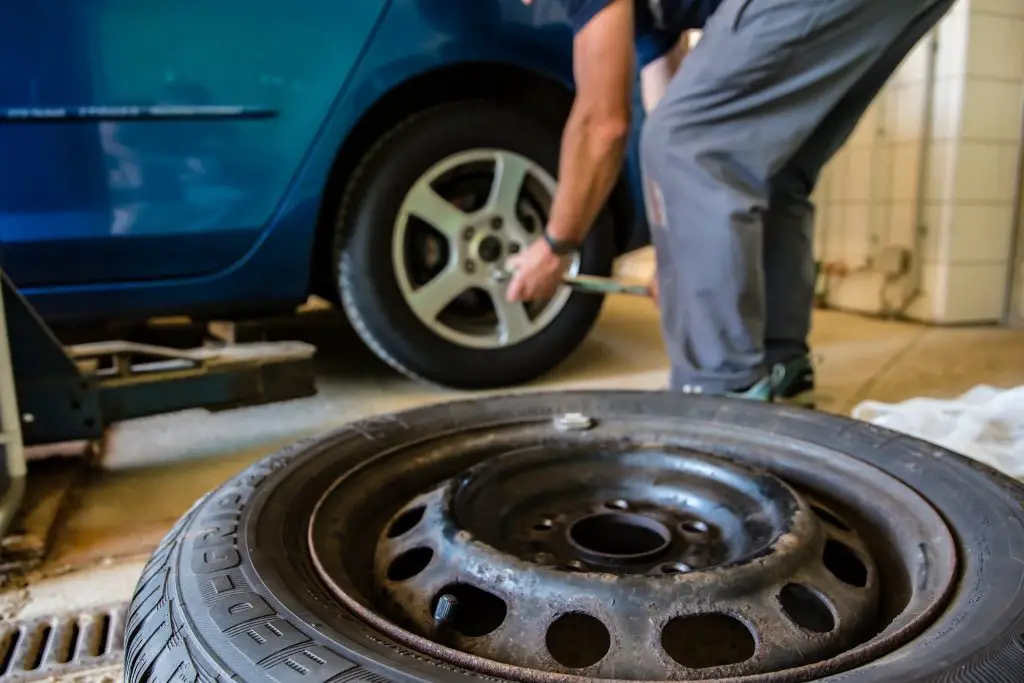
In layman’s term, tyre rotation simply means periodically switching the position of each tyre.
For instance, you can switch your front tyres with your rear tyres after every 5,000 miles and vice versa. This helps ensure that your tyres wear more evenly and last longer, giving you a smoother and safer experience while on the road.
As suggested by most vehicle manufacturers, you should rotate your tyres frequently. However, if you notice uneven wear, you should rotate them as soon as possible.
How to rotate your tyres
Tyre rotation patterns differ from every car type. As per the Tyre Industry Association, there are three tyre rotation patterns common among today’s cars.
Front-wheel vehicles rotation pattern
If you have a front-wheel-drive vehicle, the two front tyres stay on the same side but switch them with your rear tyres. In the same way, your rear tyres should move to the front on the same side.
For instance, you can switch your front left tyre with the rear left tyre. The same goes for the right front and rear tyres.
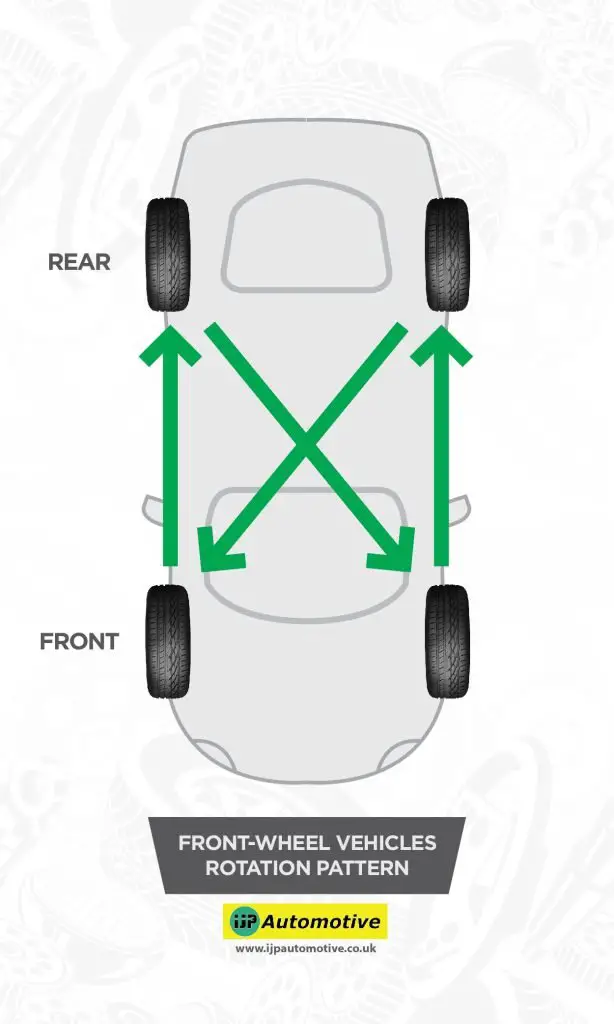
Rear-wheel vehicles rotation pattern
For rear-wheel vehicles, it’s a bit tricky but it’s not that difficult.
All you have to do is move the rear tyres straight to the front, on the same side. After that, move each front tyre to the opposite rear corner.
For example, your right front tyre should go to the left rear side and then vice versa.
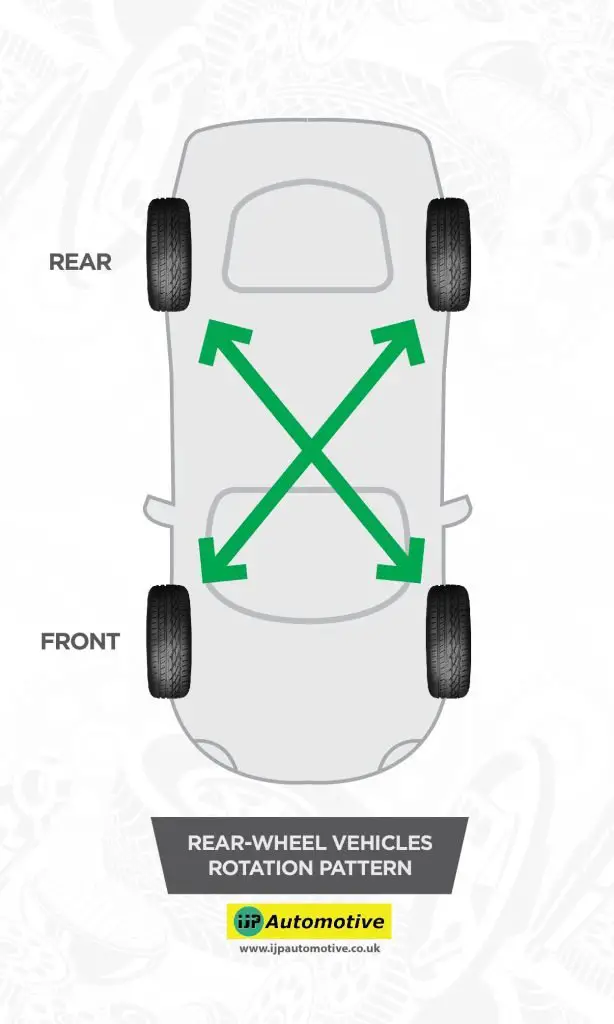
All-wheel-drive vehicles rotation pattern
For all-wheel-drive vehicles, all you have to do is to crisscross all four tyres. For example, your right front tyres should switch with the left rear tyres. Your left front tyres should switch with your right rear tyres.
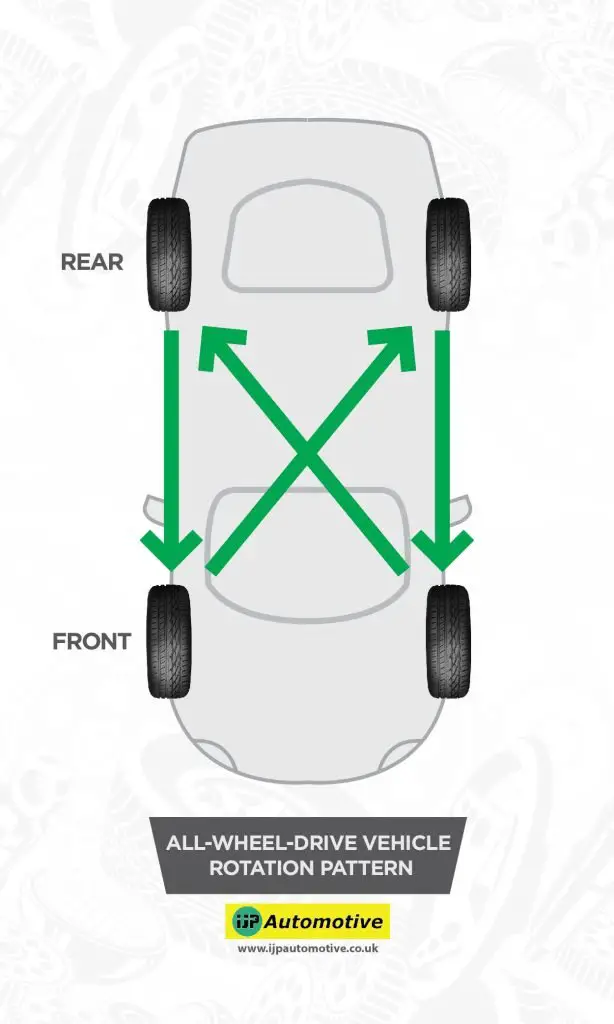
Tyre rotation is also a great opportunity to inspect the status of your tyres. Therefore, check the tyre pressure and make sure you don’t over or under inflate your tyres.
A tyre pressure guide found under the bonnet or inside the car will give you an idea of the ideal pressure of your tyres.
Other care and safety tips for your tyres
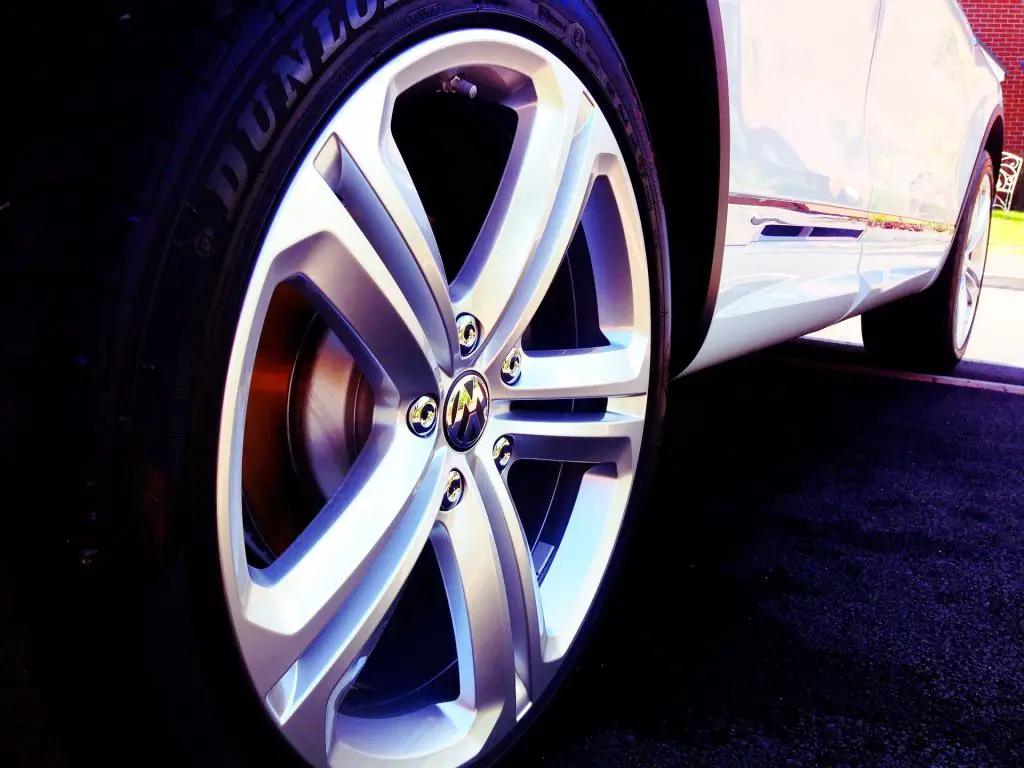
Caring for your tyres is not limited to tyre rotation and tyre pressure. You should also check the tyre alignment and tyre balancing.
What are they and how are they different from the other?
Balancing your tyres
If you want to keep your tyres from wearing faster, getting them balanced is a smart move. The best time to check for tyre balance is during tyre rotation.
You may also visit your nearest tyre shop, so experts can balance your wheel-tyre unit on a tyre balancing machine.
Aligning your tyres
Tyre alignment, also known as wheel alignment, is done by checking and adjusting the angles of the tyres to the body of the car.
Experts use an alignment track and special sensors to measure the actual angles of the tyres. Ideally, your car should undergo a tyre alignment every 2-3 years.
Conclusion
You are responsible for your safety on the road. However, to be truly safe, ensure your tyres stay in tip-top shape.
Plus, tyres are also the ones often neglected but eventually suffer the most wear and tear. So, if you fail to take care of them, you may end up spending more on pricey replacements.
Related:
FAQs
Yes, rotating your tyres is an important maintenance practice that helps promote even tyre wear and extends their overall lifespan.
You can have uneven tyre wear, reduced traction and handling, tyre failure, fuel inefficiency, rough travelling, and premature tyre replacement.
The frequency of tyre rotation can vary depending on factors such as the vehicle type, tyre type, driving conditions, and manufacturer recommendations. But generally, it is recommended to rotate your tyres every 5,000 to 7,500 miles (8,000 to 12,000 kilometers) or as specified in the vehicle owner’s manual.
Regular tyre rotation helps ensure even wear, extends tyre life, maintains optimal performance, and enhances safety on the road.

